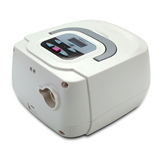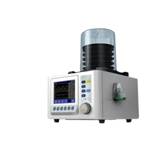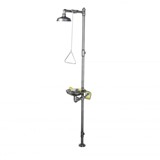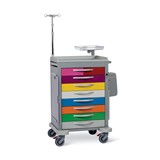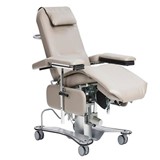Find up-to-date emergency ventilator prices in Australia. Compare models, warranties, and financing options to buy the best ventilator for your hospital or clinic.
Key takeaways
- Pricing for emergency ventilators in Australia ranges from $10,000 to $40,000+, depending on technology, brand, and features.
- Types include invasive, non-invasive, transport, and portable ventilators, each designed for specific clinical scenarios and patient needs.
- Operation modes vary widely — pressure control, volume control, and hybrid modes support different respiratory therapies.
- Maintenance costs typically amount to 5–10% of the purchase price annually, including calibration, filter replacement, and software updates.
- Parts availability is critical; sourcing consumables like breathing circuits and filters locally reduces downtime.
- Financing options such as medical equipment leasing and government grants are accessible in Australia, easing capital expenditure pressures.
- Warranties generally cover 12 to 36 months, with extended service plans available for critical healthcare equipment.
- Compliance with Therapeutic Goods Administration (TGA) regulations and ISO 13485 certification ensures legal operation and patient safety in Australia.
Introduction
Emergency ventilators are vital life-support devices that provide respiratory assistance to patients experiencing acute respiratory failure or distress. For hospitals, ambulance services, aged care facilities, and remote clinics across Australia, selecting the right emergency ventilator is critical for effective patient care and compliance with national safety standards.
This guide will walk you through the key considerations for purchasing emergency ventilators in Australia, covering types, pricing, operation, maintenance, financing, and compliance to help you make informed, confident buying decisions.
Types of emergency ventilators
Understanding the different types of ventilators helps match the device to your facility’s needs:
- Invasive ventilators
- Deliver breaths via an endotracheal or tracheostomy tube; used primarily in ICU settings.
- Non-invasive ventilators (NIV)
- Use masks or nasal interfaces; suited for emergency departments and step-down care.
- Transport ventilators
- Compact, rugged units designed for ambulance or helicopter use must balance functionality and portability.
- Portable ventilators
- Lightweight, battery-powered devices for home care or remote medical services.
Each type varies in complexity, portability, and clinical features, which directly influence cost and maintenance requirements.
Emergency ventilator prices in Australia
Pricing depends on type, features, and brand reputation. Approximate price ranges (AUD):
- Basic portable ventilators: $10,000 – $20,000
- Standard non-invasive ventilators: $18,000 – $35,000
- Advanced invasive ventilators (ICU grade): $30,000 – $40,000+
- Transport ventilators: $20,000 – $45,000
Note: Additional costs for accessories (breathing circuits, masks, filters) can add $500 to $2,000 annually. Installation and staff training may also incur extra charges.
Operation and features
When choosing an emergency ventilator, consider these key operational features:
- Ventilation modes: Pressure control, volume control, SIMV (synchronized intermittent mandatory ventilation), CPAP, BiPAP, and hybrid modes.
- User interface: Intuitive touchscreens and alarms for ease of use during emergencies.
- Battery life: Critical for transport and portable ventilators; look for devices with at least 2–4 hours of backup power.
- Data connectivity: Integration with hospital information systems (HIS) and remote monitoring capabilities support better clinical outcomes.
- Size and weight: A factor in portability for emergency response units and ambulance use.
Maintenance and parts
Regular maintenance ensures reliability and patient safety:
- Annual servicing: Calibration, leak testing, and software updates.
- Consumables replacement: Breathing circuits, filters, humidifiers, and batteries.
- Repairs: Prompt access to certified technicians and genuine parts is essential to minimise downtime.
- Maintenance costs: Expect about 5–10% of the device’s value annually for servicing and parts.
Financing options in Australia
Healthcare providers often face budget constraints but need timely access to essential equipment. Consider:
- Medical equipment leasing: Spreads costs over time, improving cash flow.
- Government grants: Programs like the Australian Government’s Health Infrastructure Grants sometimes subsidise emergency medical devices.
- Vendor financing: Some suppliers offer payment plans or lease-to-own options.
- Tax incentives: Equipment purchases may qualify for instant asset write-off under Australian tax laws.
Warranty and after-sales support
- Standard warranty: Usually between 12 to 36 months, covering parts and labour.
- Extended warranties: Available for purchase, often covering up to 5 years.
- Service agreements: Include regular maintenance visits, priority support, and training sessions.
- Supplier reputation: Choose suppliers with strong local support networks and fast response times.
Compliance and certification considerations
Compliance with Australian and international standards is mandatory for legal and safe operation:
- Therapeutic Goods Administration (TGA) approval: All ventilators must be registered on the Australian Register of Therapeutic Goods (ARTG).
- ISO 13485 certification: Ensures quality management systems specific to medical devices.
- Electrical safety standards: Compliance with AS/NZS 3551 for medical electrical equipment.
- Infection control: Devices designed to meet cleaning and sterilisation protocols, crucial in hospital settings.
- User training: Proper training documentation and certification to comply with workplace safety regulations.
Installation and training requirements
Proper installation and comprehensive staff training are crucial to ensure emergency ventilators operate safely and effectively in Australian healthcare settings.
Installation considerations:
- Site preparation: Ensure the installation area has reliable electrical supply meeting AS/NZS 3000 (Wiring Rules) standards, with adequate backup power such as uninterruptible power supplies (UPS) or generators, especially for critical care units.
- Space and ventilation: Allocate sufficient space around the ventilator for access, maintenance, and patient comfort. Compliance with hospital infection control guidelines requires well-ventilated rooms with controlled airflows.
- Environmental conditions: Devices typically require operation within temperature ranges of 15°C to 30°C and relative humidity below 80% to maintain optimal performance and longevity.
- Installation timeframe: Depending on complexity, installation usually takes 1–3 days, including calibration and system integration with hospital monitoring networks.
Training essentials:
- Initial training: Manufacturers or accredited suppliers provide onsite or virtual training, covering ventilator setup, modes of operation, alarm management, and troubleshooting.
- Competency assessments: Australian healthcare accreditation bodies recommend regular competency checks, often bi-annually, to ensure staff maintain proficiency with device operation and emergency protocols.
- Refresher courses: Given rapid technology evolution and protocol updates, schedule refresher sessions annually or after significant equipment upgrades.
- Documentation: Maintain detailed training records and user manuals to support compliance with Work Health and Safety (WHS) regulations and TGA requirements.
Proper installation and training reduce operational risks, improve patient safety, and extend ventilator lifespan — all vital in high-pressure emergency settings.
Usage scenarios and clinical applications
Emergency ventilators are deployed across diverse Australian healthcare environments, tailored to meet specific clinical demands and patient needs.
Clinical settings:
- Emergency departments: Non-invasive and portable ventilators stabilise patients during acute respiratory distress before ICU transfer.
- Intensive care units (ICUs): Advanced invasive ventilators provide full respiratory support for critically ill patients, including those with COVID-19-related ARDS (Acute Respiratory Distress Syndrome).
- Ambulance and aeromedical transport: Transport ventilators with durable batteries and shock-resistant casings facilitate uninterrupted ventilation during patient transfer over varying terrains.
- Remote and rural healthcare: Portable ventilators enable life-saving respiratory support where full-scale ICU infrastructure is unavailable, supporting telemedicine consultations.
- Field hospitals and disaster response: Rapidly deployable ventilators are critical in mass casualty incidents or pandemic surges, improving survival odds through scalable respiratory support.
Understanding these diverse applications helps buyers select ventilators optimally matched to their operational context, improving care quality and resource utilisation.
Common questions from emergency ventilator buyers
Q: What type of ventilator is best for a rural clinic?
Portable or non-invasive ventilators with battery backup and simple interfaces are ideal for remote locations lacking full ICU facilities.
Q: How often should ventilator consumables be replaced?
Typically, breathing circuits and filters require replacement every 24–48 hours or per manufacturer guidelines to prevent infection.
Q: Can emergency ventilators be integrated with hospital monitoring systems?
Many modern ventilators support connectivity with HIS and remote monitoring platforms, but confirm compatibility before purchase.
Q: What training is required to operate emergency ventilators?
Healthcare staff should receive manufacturer-provided training and competency assessments to ensure safe and effective use.
Q: Are there funding programs to help purchase ventilators?
Yes, Australian healthcare providers can access government grants, leasing options, and tax incentives to offset costs.
Conclusion
Purchasing an emergency ventilator in Australia requires careful consideration of type, price, features, compliance, and after-sales support. By understanding these factors and leveraging financing options, healthcare providers can secure reliable, compliant ventilators that meet critical care needs efficiently and cost-effectively.




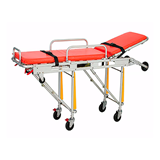

-160x160-state_article-rel-cat.png)

